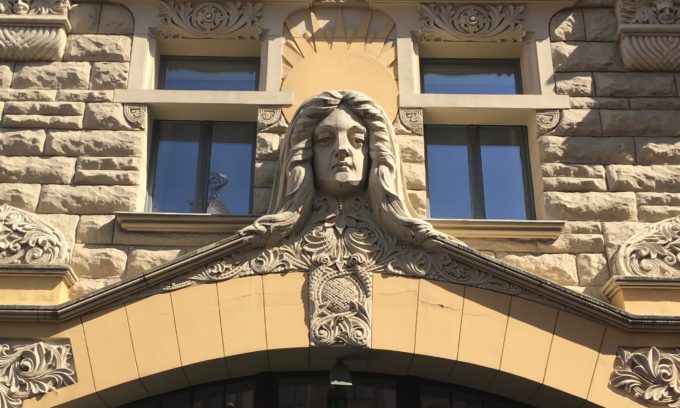We arrive on June 14 – a solemn day of remembrance in Latvia and the Baltics in general. Everywhere we see people carrying flowers to the towering Freedom Monument to commemorate the Soviet mass deportations of June 14, 1941 – a few months after the USSR annexed the Baltic states, and a week before Hitler invaded. Latvia – another country with history so loaded that you wonder how anyone survived. As a former student of “Soviet Affairs” it still shocks that Stalin was so fearful of possible Latvian political opponents that he spent time and resources carting them to the Gulag just days before the Wehrmacht showed up. (And you remember how that went – 20 million Soviet war dead.) You have to come to Eastern Europe to remember how awful the middle of the century was. Occupation, destruction, repression from all sides – Soviet, Nazi, Soviet – 1940-1991.
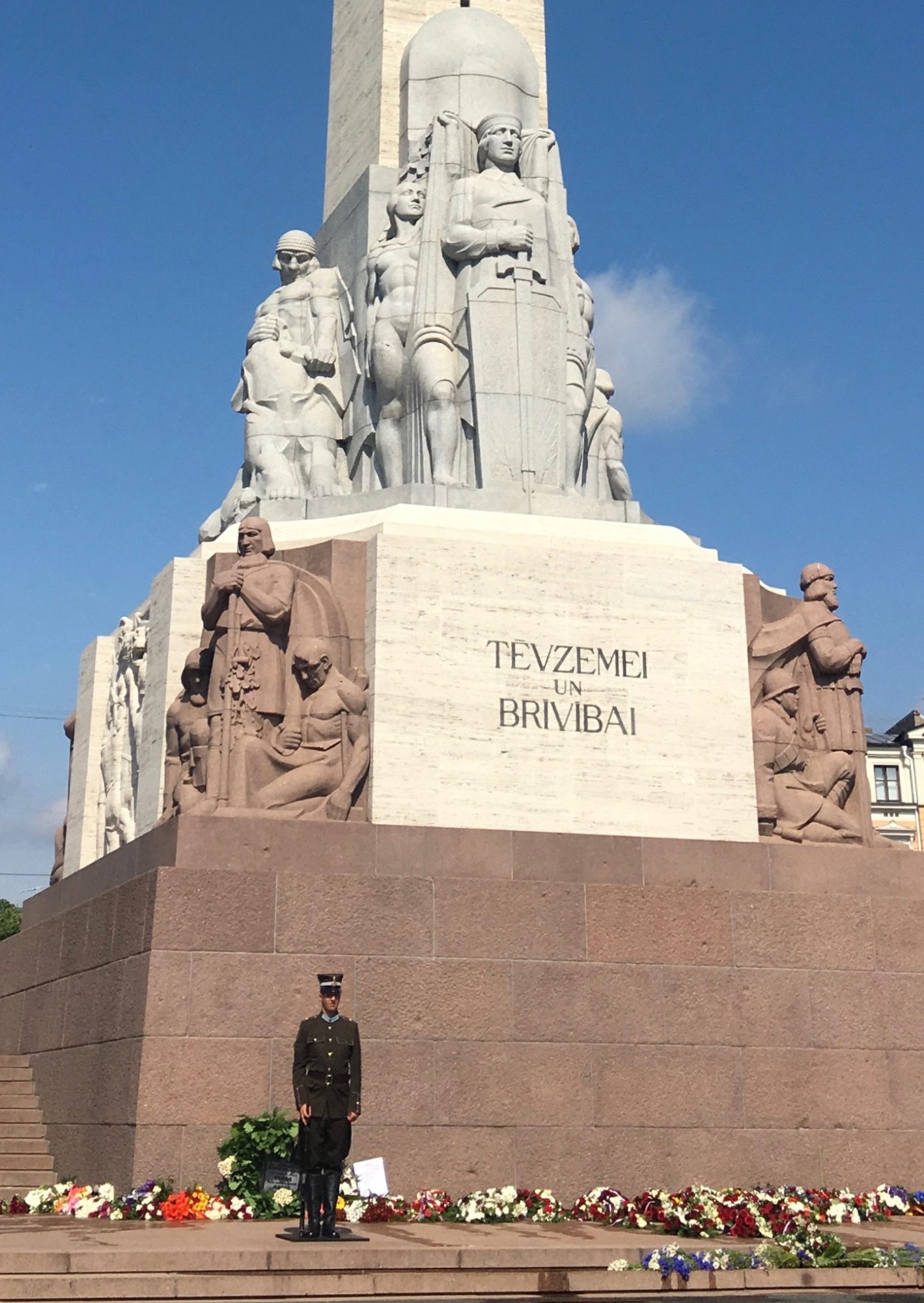
Driving from Vilnius to Latvia you realize why these countries have been trampled endlessly: they are as flat as a piece of toast. The highest point in Lithuania is about 800′. Latvia is higher by a couple of meters. With narrow rivers, wide open fertile fields, and forests of birch and pine they are basically defenseless. Latvia has a total population of 2 million – about the size of a small US city, and more than half live in Riga and the surrounding area. After huge losses in WWII – including the entire Jewish population of 70,000 – the Soviets continued to depopulate the country (tens of thousands sent to the Gulag in 1949) and replace them with Russians. So it is today – I hear more Russian on the street than Latvian. Almost 50% of Riga is Russian-speaking and non-citizens. They have a Green Card-type status, which entitles them to all privileges except voting. They don’t become citizens because they can’t speak Latvian – or so I am told – but frankly, this doesn’t make sense. Surely their children learn Latvian in school? This may explain why Latvia is nervous about Putin breathing down its neck – the border with Russian and Belarus (last dictatorship in Europe) is porous and many Russians live on the Latvian side. The Big Guys carry out joint military exercises every couple of years and Latvians are terrified of this muscle-flexing in their back yard. But back to being a tourist! It’s still uncharacteristically hot and we check in to the lovely Hotel Neiburgs, a restored Art Deco building, which appears to be at the tail end of a steady stream of tourists who stand in front of it and take pictures. Why? Evidently a popular Russian TV series was filmed in the building and suddenly it’s on the mass tourism radar.
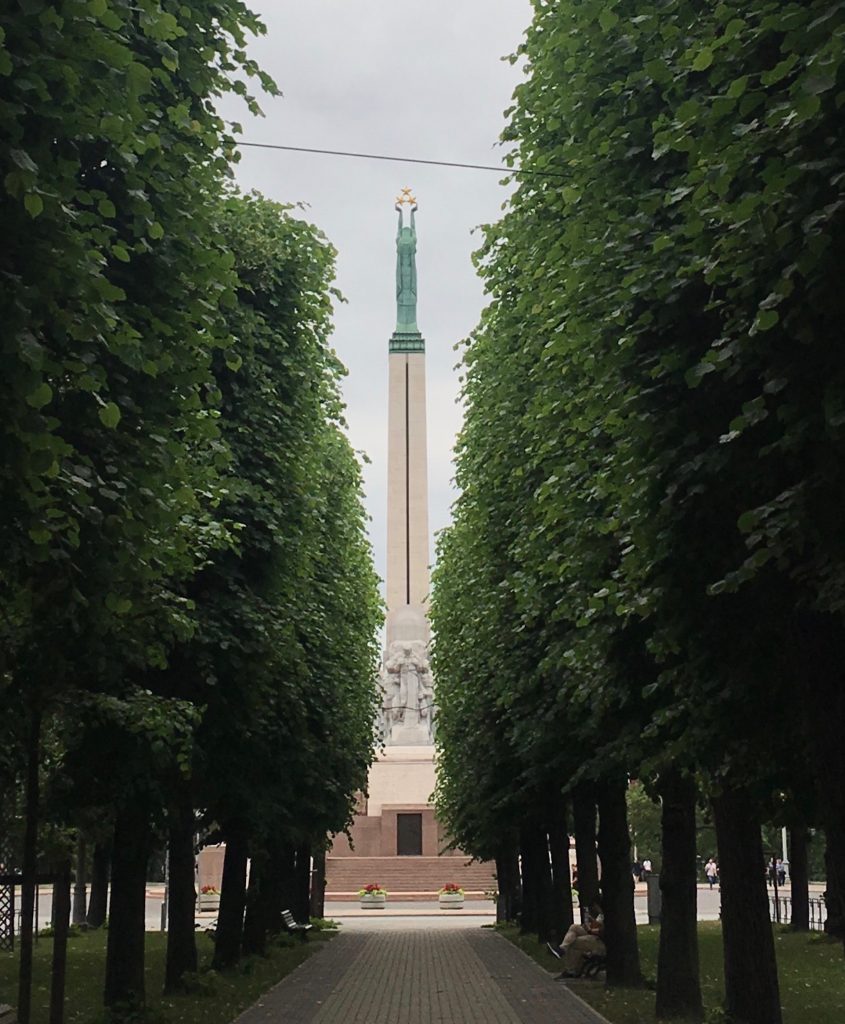
Riga: Freedom Monument 
Black bread! The staff of life 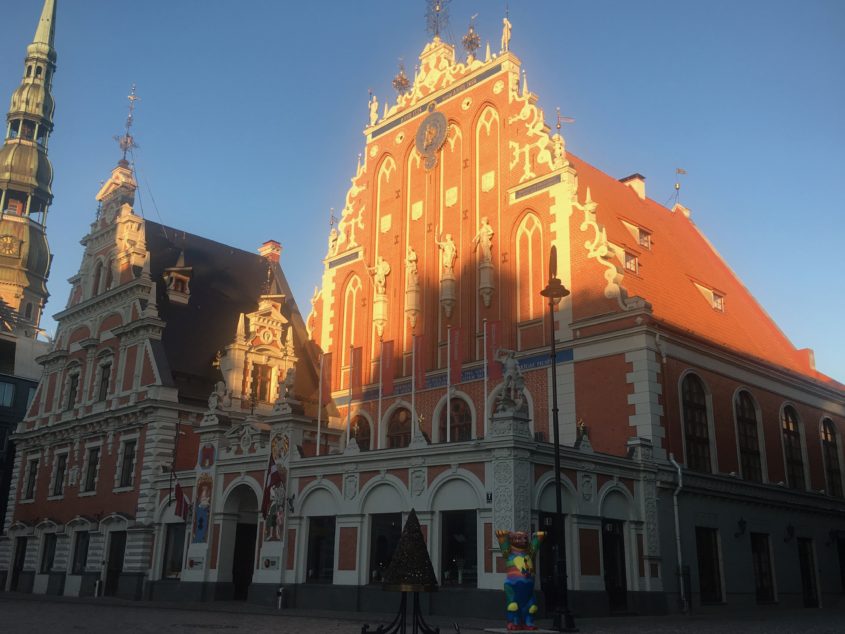
Just restored 14th century Blackheads Guild; Town Square
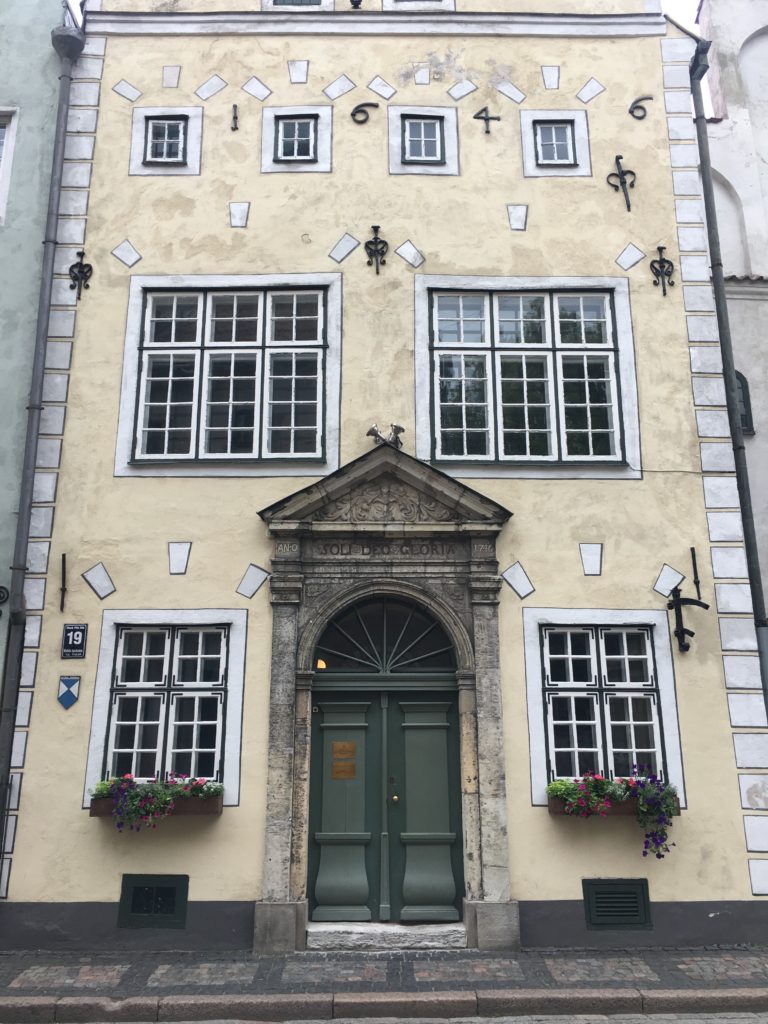
Three Brothers: Hanseatic Guild 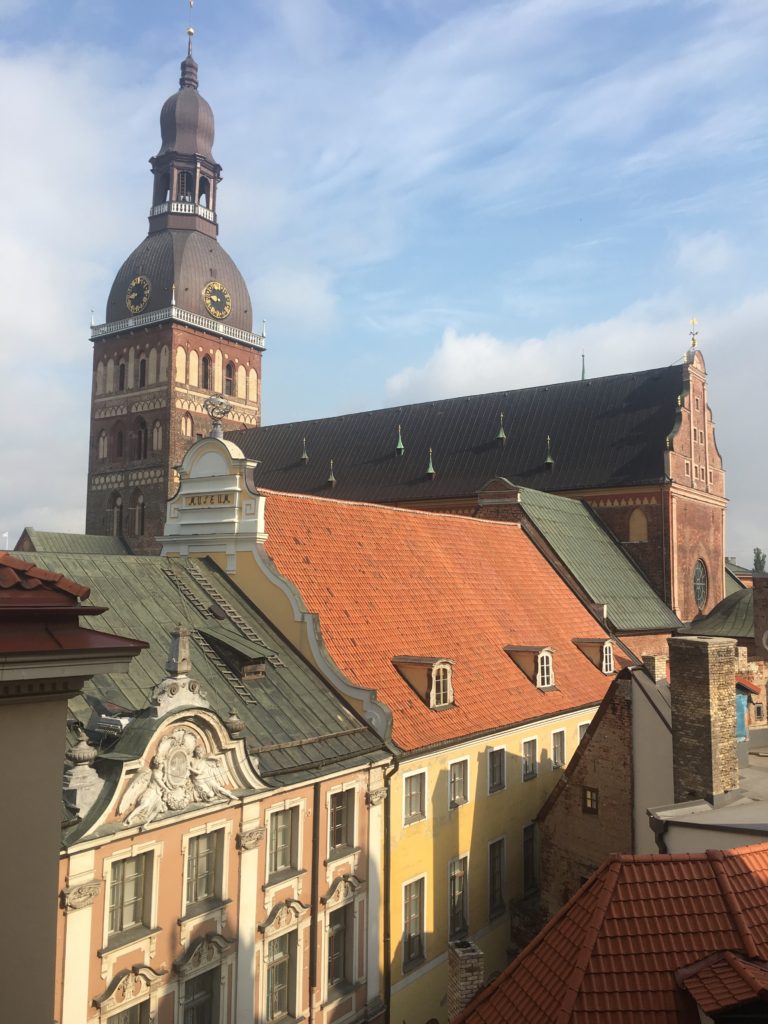
Dome Cathedral from our window 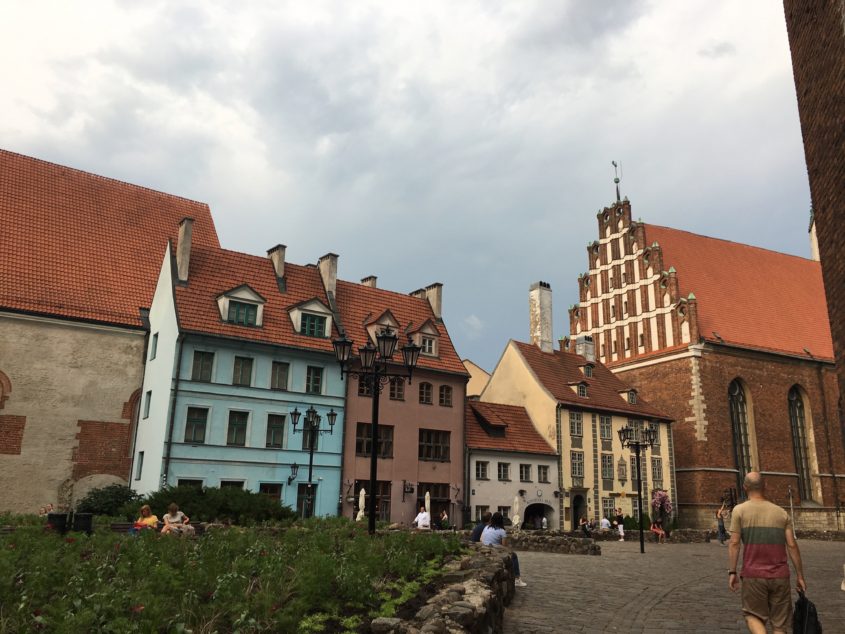
St. Peter’s Square
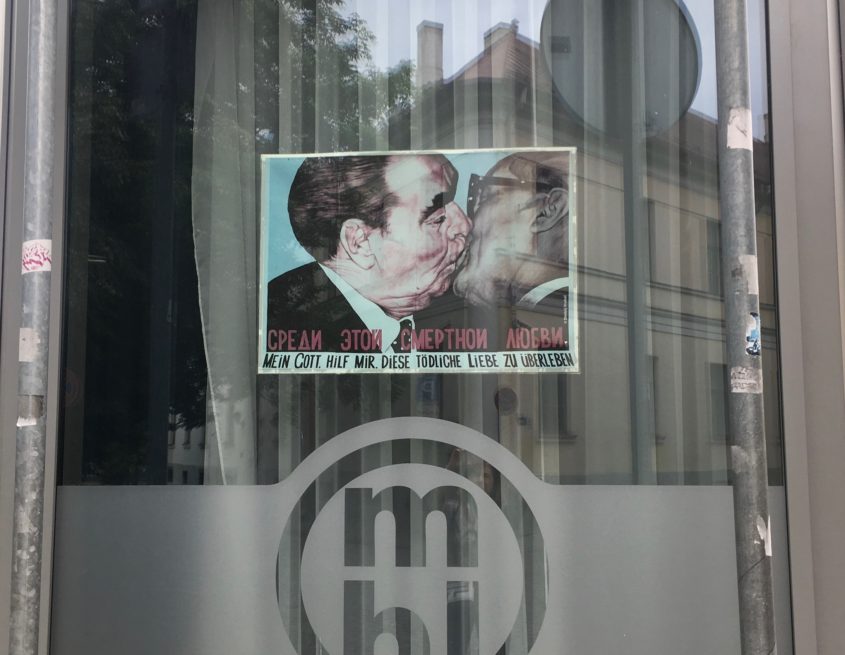
Brezhnev kissing someone… 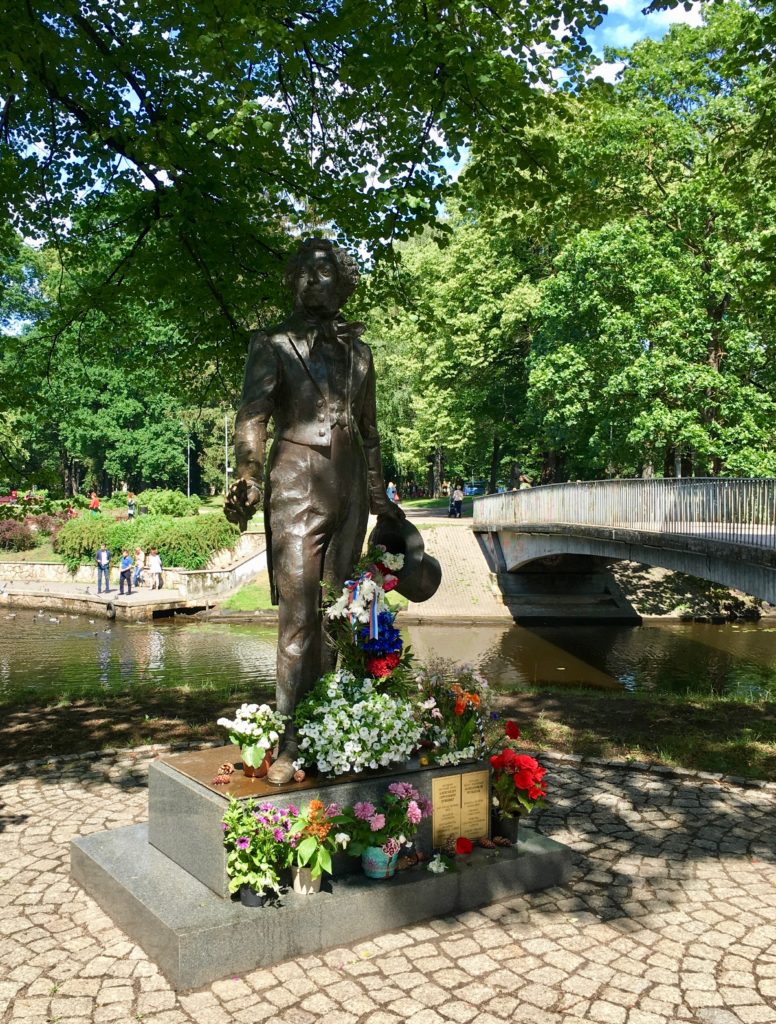
Showing Pushkin some love 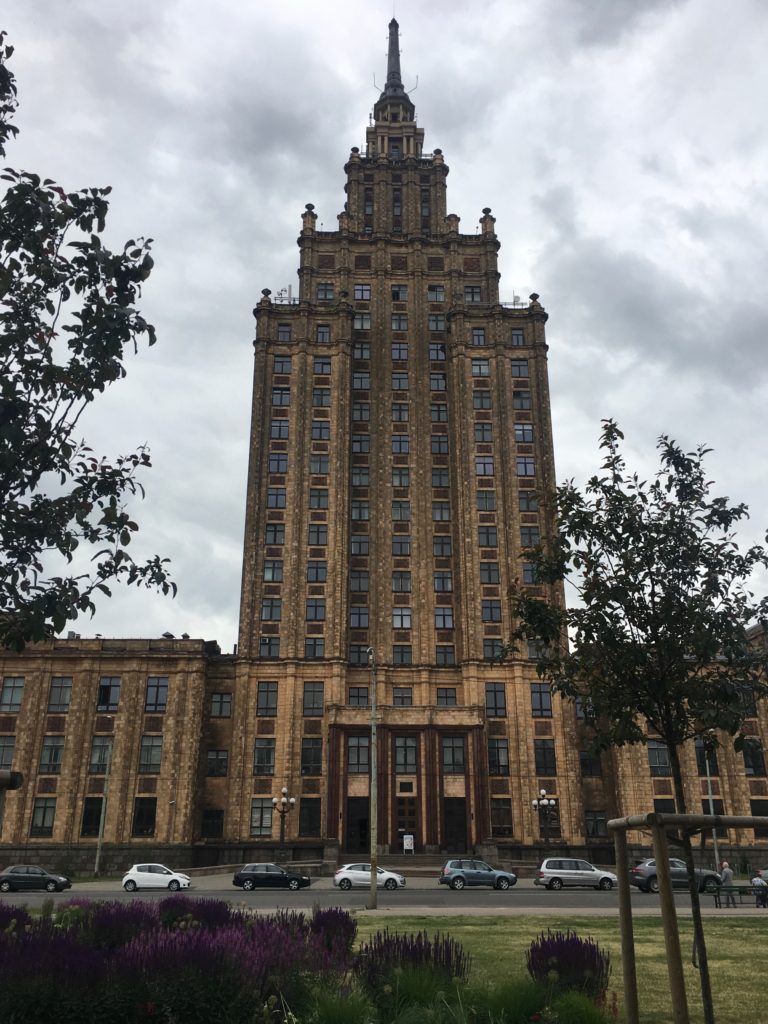
“Stalin’s birthday cake.” Can’t escape Soviet hideousness
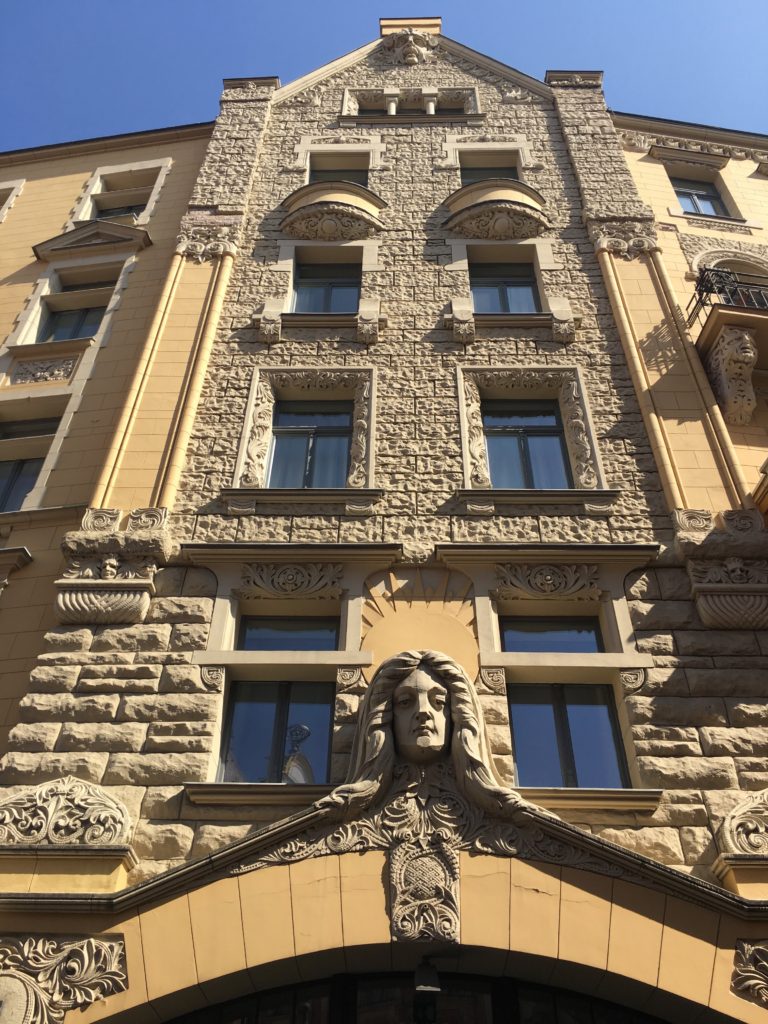
And yes, mass tourism has found its way to the center of old town Riga which was sadly inevitable because it is truly lovely. Very unlike medieval, twisting, atmospheric Vilnius, it was far more damaged in WWII and has been beautifully restored. So many of the buildings date from the 1200s that they have been restored repeatedly, and now it’s hard to tell what’s real and what’s “Disney”. They are so pretty that it almost doesn’t matter, if it weren’t for the (occasional) appearance of KFC and the like. And the endless pubs catering to British and German drinking tours. (No Americans, however.) The towering red brick churches and their green copper spires (Catholic, Lutheran, Anglican) dot the skyline like compass points, accompanied by the domes of Russian Orthodox churches.
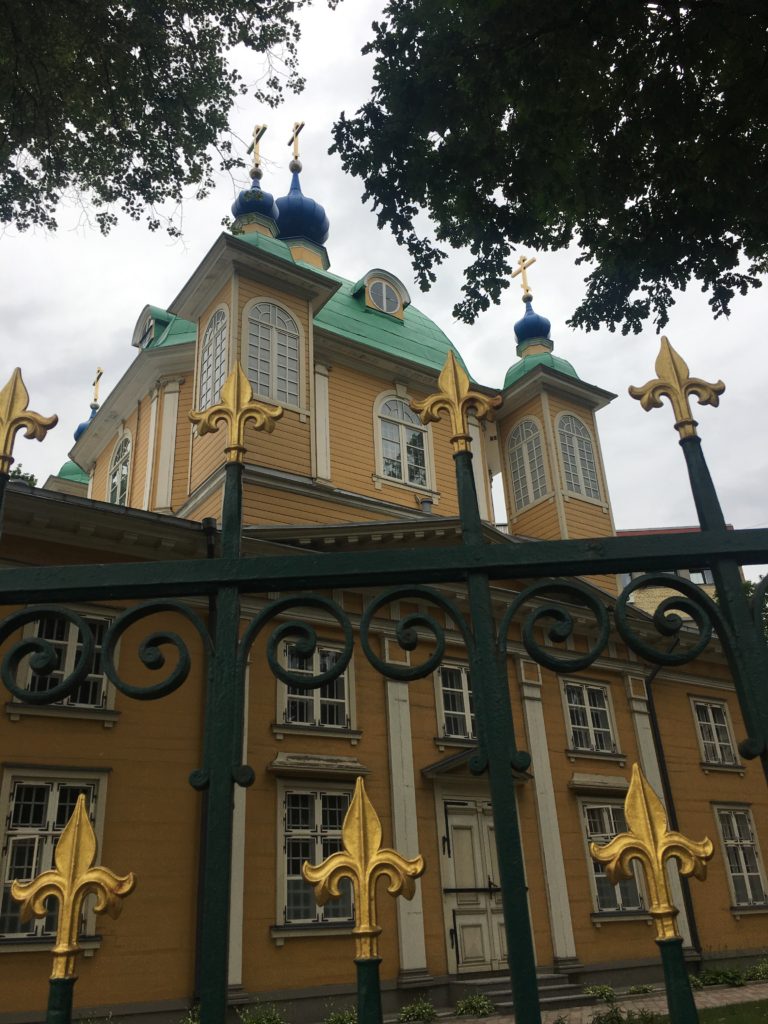
Russian Orthodox Church in the “Moscow Suburb” 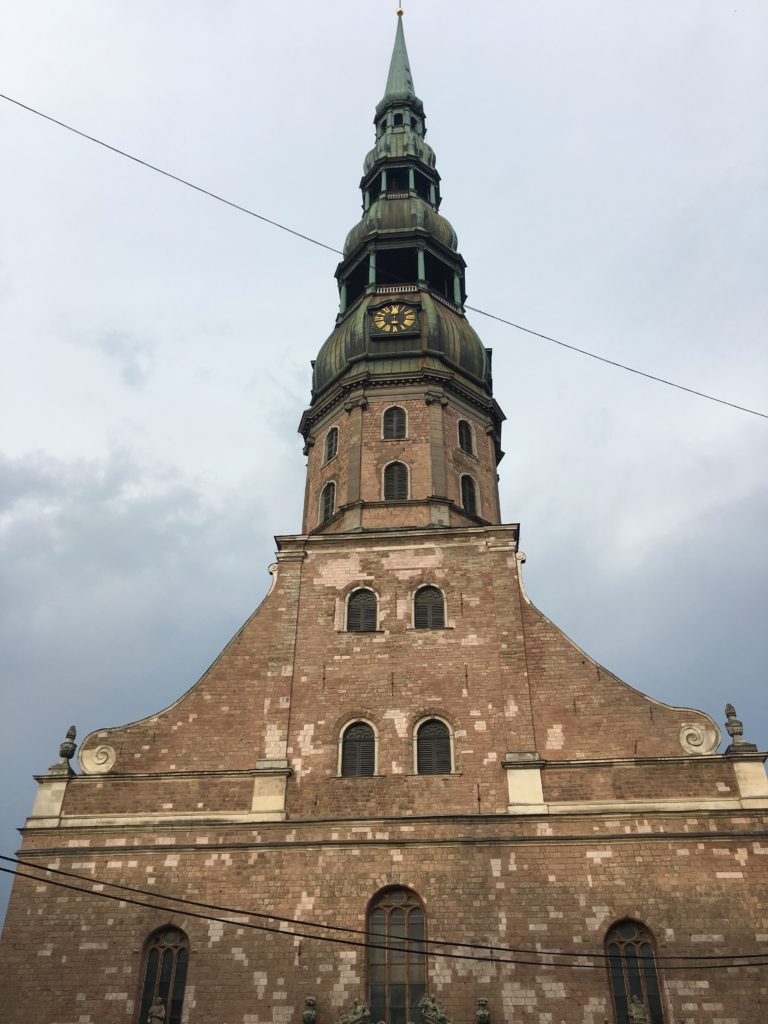
St. Peter’s – dating from the 1200’s 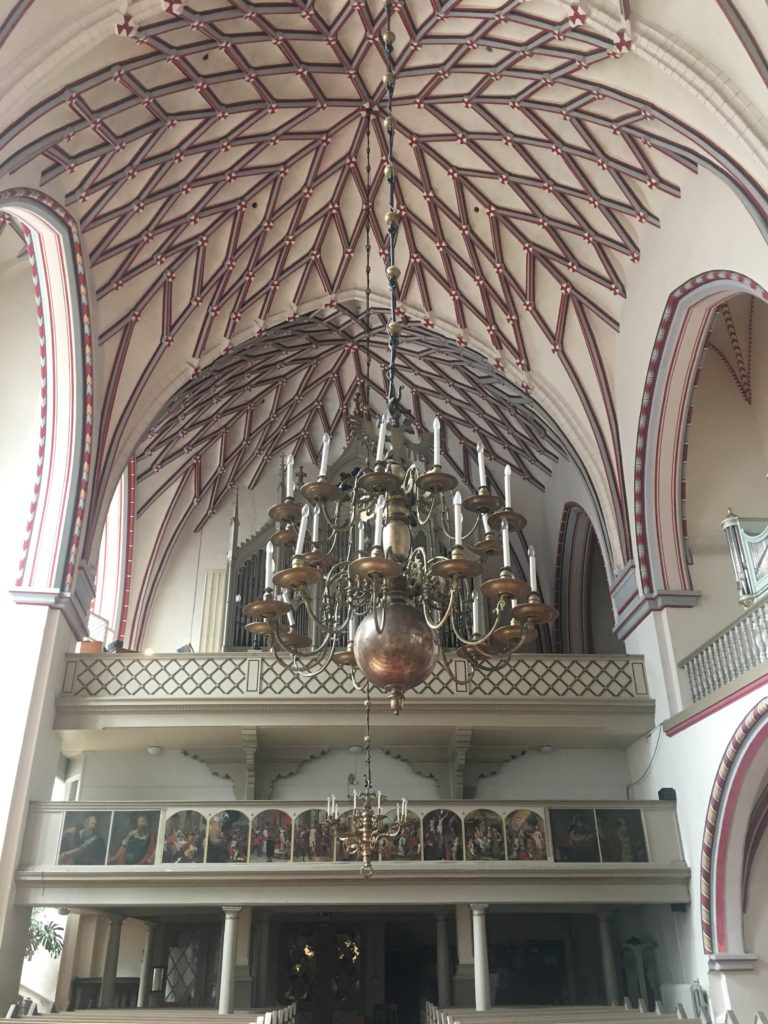
The Ceiling of St. John’s – oldest Lutheran Church
Where Lithuania is still intensely Catholic, Latvia has a long Reformist and Lutheran tradition – part of the German merchant Hanseatic League – and the city reminds me of Amsterdam with a dash a Vienna and a bit of Prague. Beyond the old town, the city has rings of lovely parks – green and leafy with canals and playgrounds and konditerei (cafes) giving it the gentle cosmopolitan feel of a small European city not yet in the 21st century.
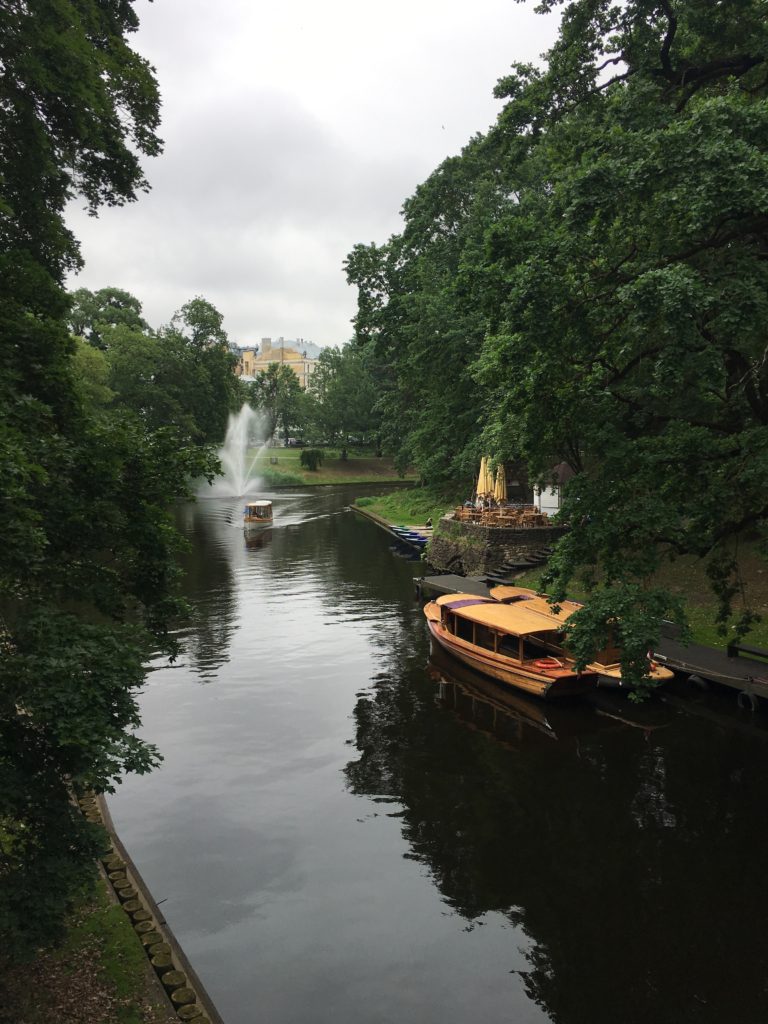
Canals, fountains, boat rides… 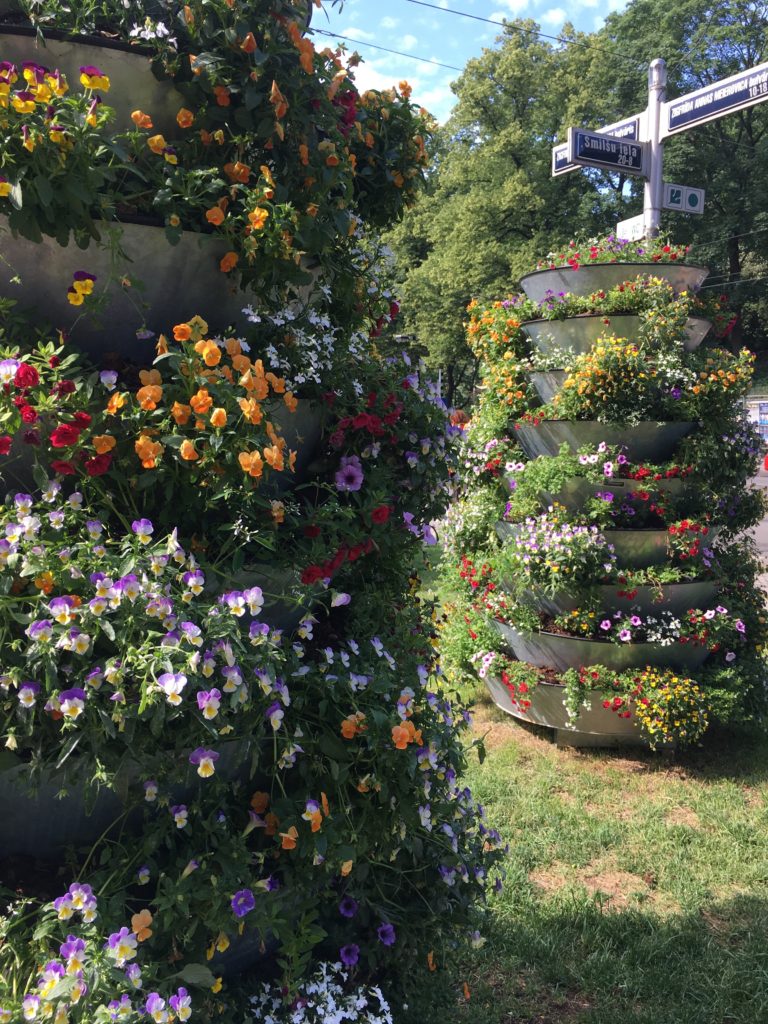
Summer is short; color helps! 
Lion guarding a lovely cafe 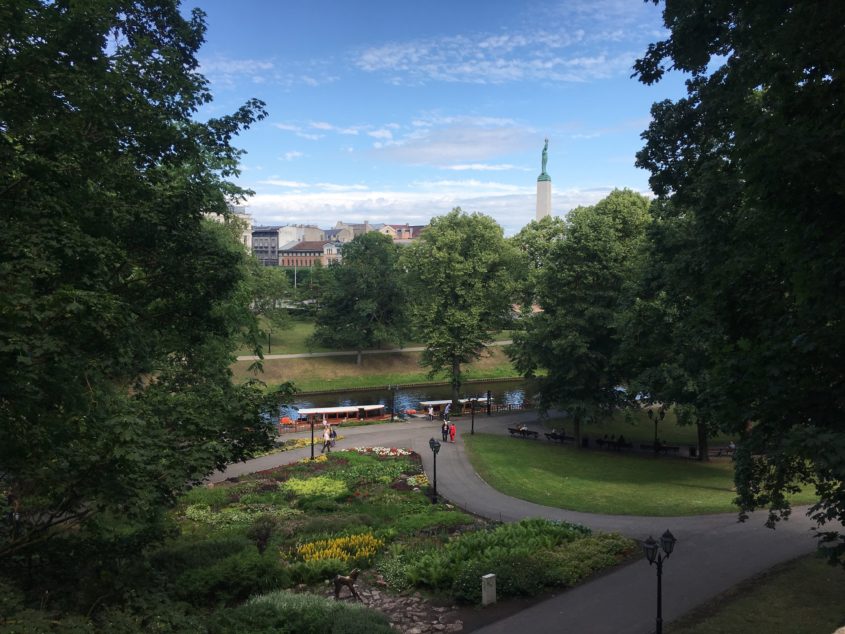
Greenery winding through the city with Freedom Monument in the distance
The park ring spills over into the delightful Art Nouveau district – built between 1900 and WWI. There are streets and streets of buildings in various stages of refurbishing that are eye-popping in their colors and decoration – part of the Jugenstihl movement with uniquely Latvian design motifs. Evidently this is the largest concentration of Art Nouveau buildings in one place in the world.
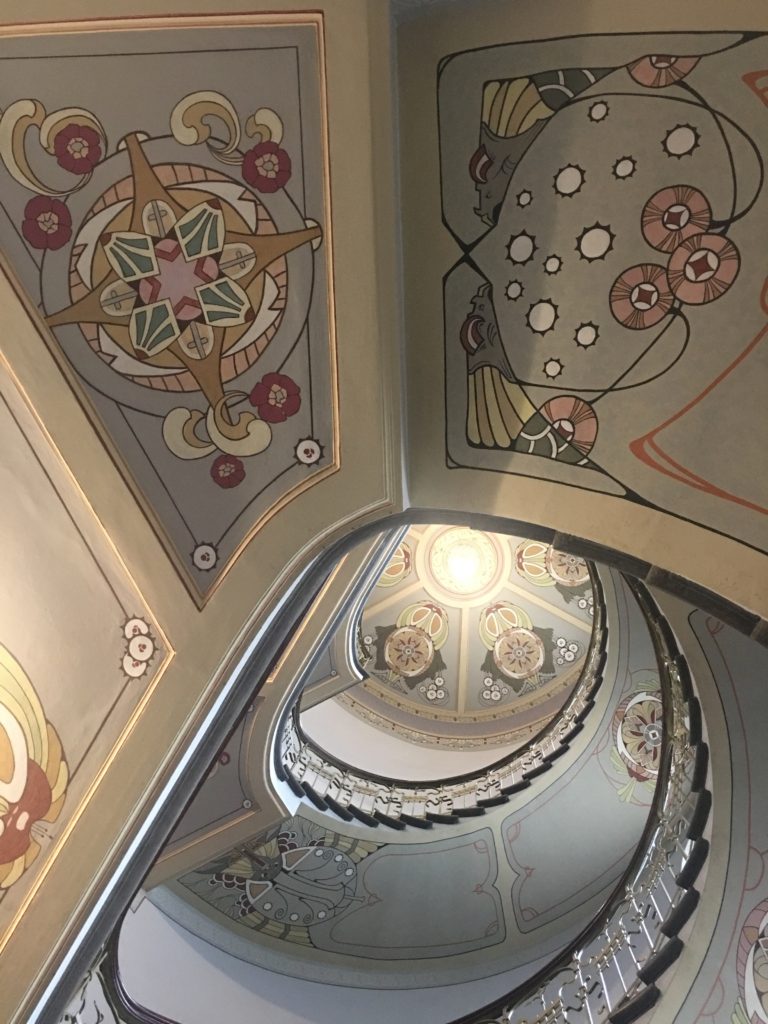
Staircase in the Art Nouveau Museum 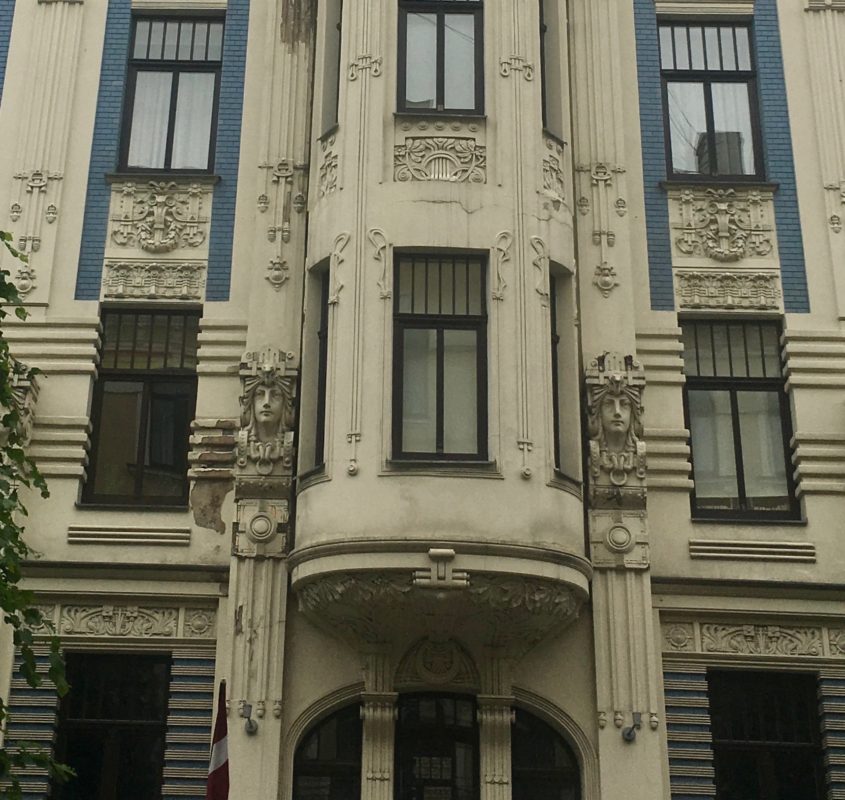
Beautiful detail 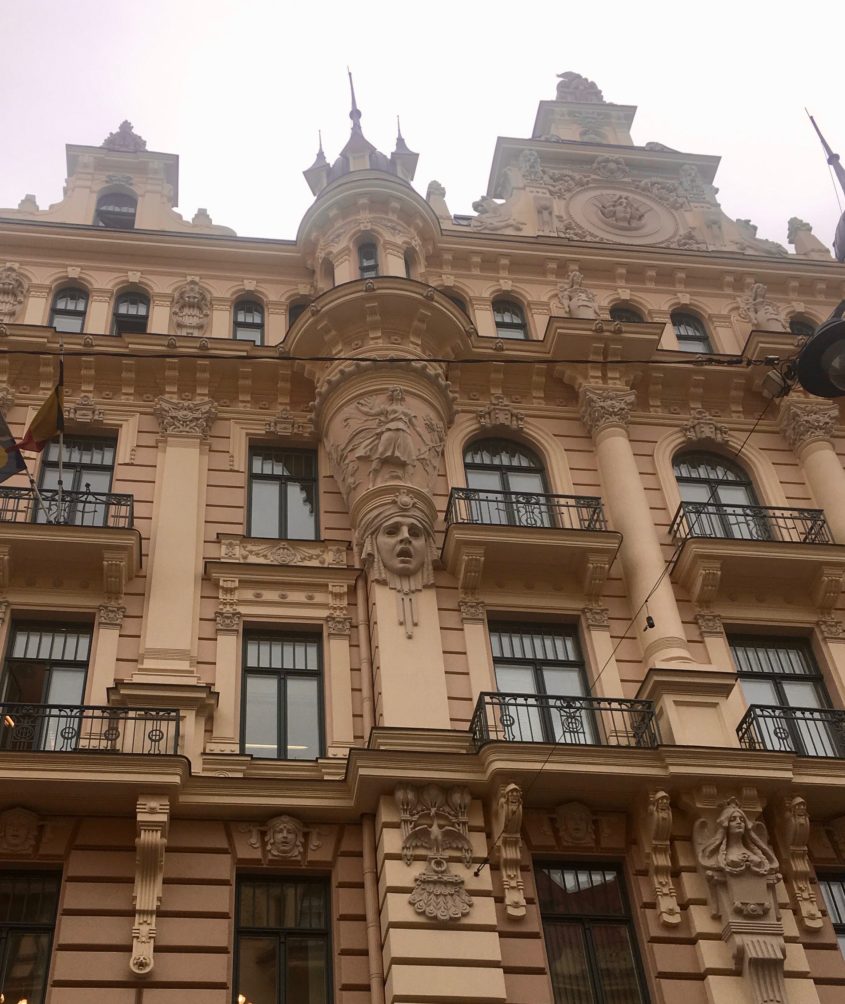
Look up!
Beyond the Art Nouveau ring, you move quickly into the damage that being part of the Soviet Union can do in the form of drab, uniform, unkempt, run-down buildings. The area known as the Moscow Suburb – where immigrants arrived in the late 1800s/early 1900s – is a fitting name in more ways than one; Home to a unique collection of old wooden houses – currently falling apart but soon to be gentrified.

Wooden house; like a little Russian “izba” 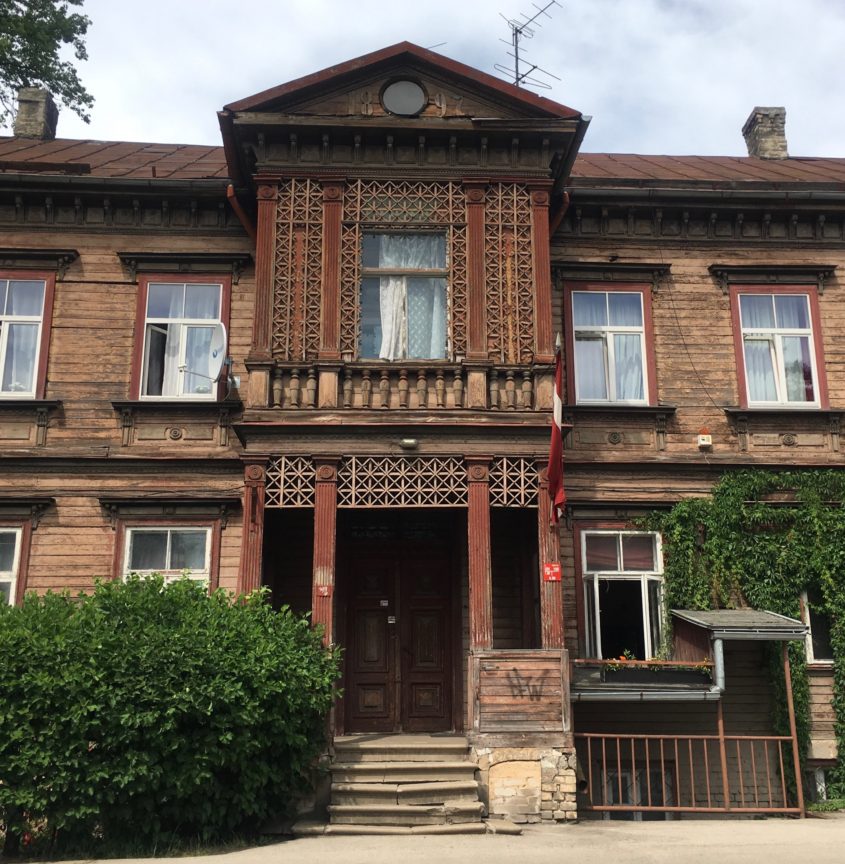
Fading but lovely 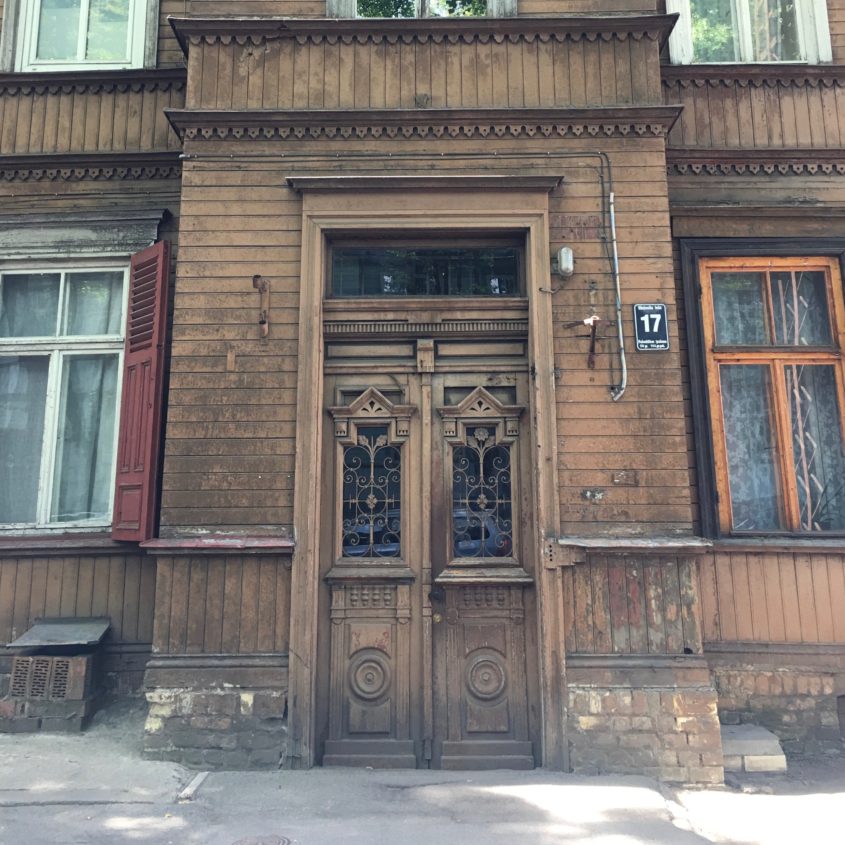
Waiting to be rescued
It was also the site of the Jewish Ghetto under the Nazis, and a litany of their crimes. (Of 28 synagogues only one is left). We visit the lovely remaining Shul, saved because burning it down would have damaged too many of the surrounding buildings. We also visit the Jewish museum and community center, home to 8,000 mostly Russian-speaking Latvians – many having moved back from Russia after the war. (It’s complicated.) After a visit to the Museum of Occupation, and the memorial to Jews burned alive inside the Choral Synogogue – it hurts to think.
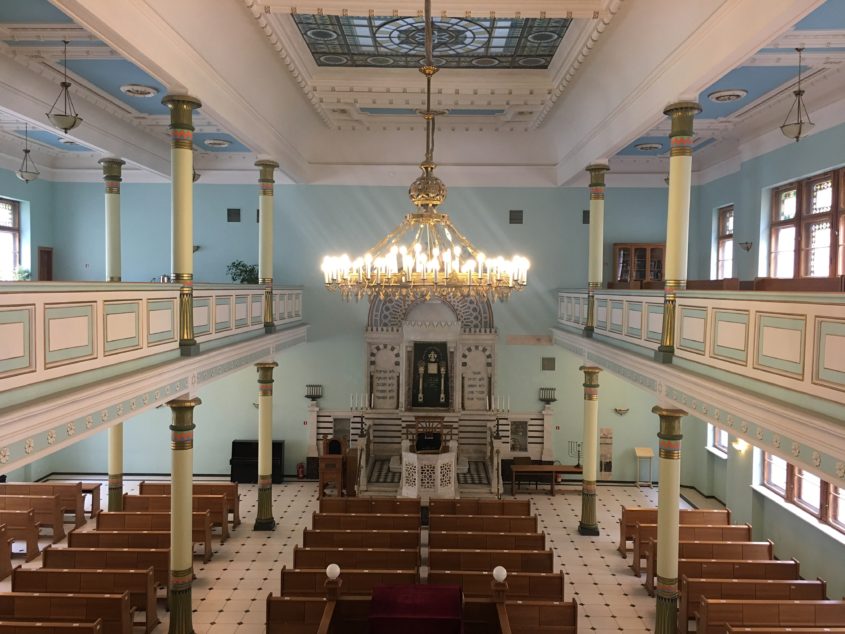
Restored Art Nouveau Peitav Shul 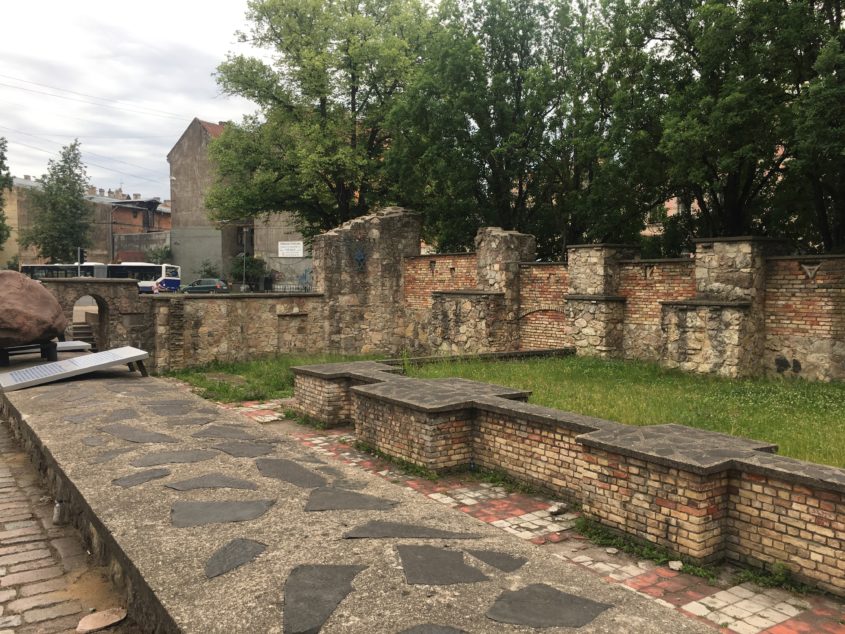
Old Jewish Ghetto: Haunting site of Nazi destruction
Back to the light; parks, wonderful food, the late-setting sun, huge central market with mountains of fresh fruit (largest in Europe!) old buildings brought back to life, footsteps on cobblestone, the echo of an unseen violin.
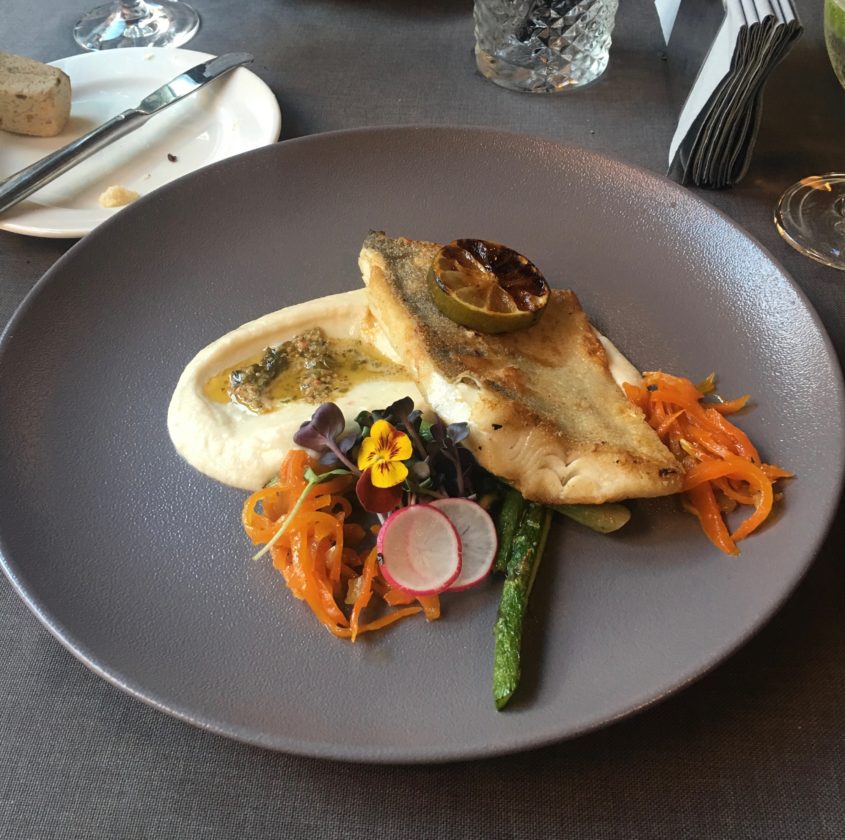
Everything served with flowers 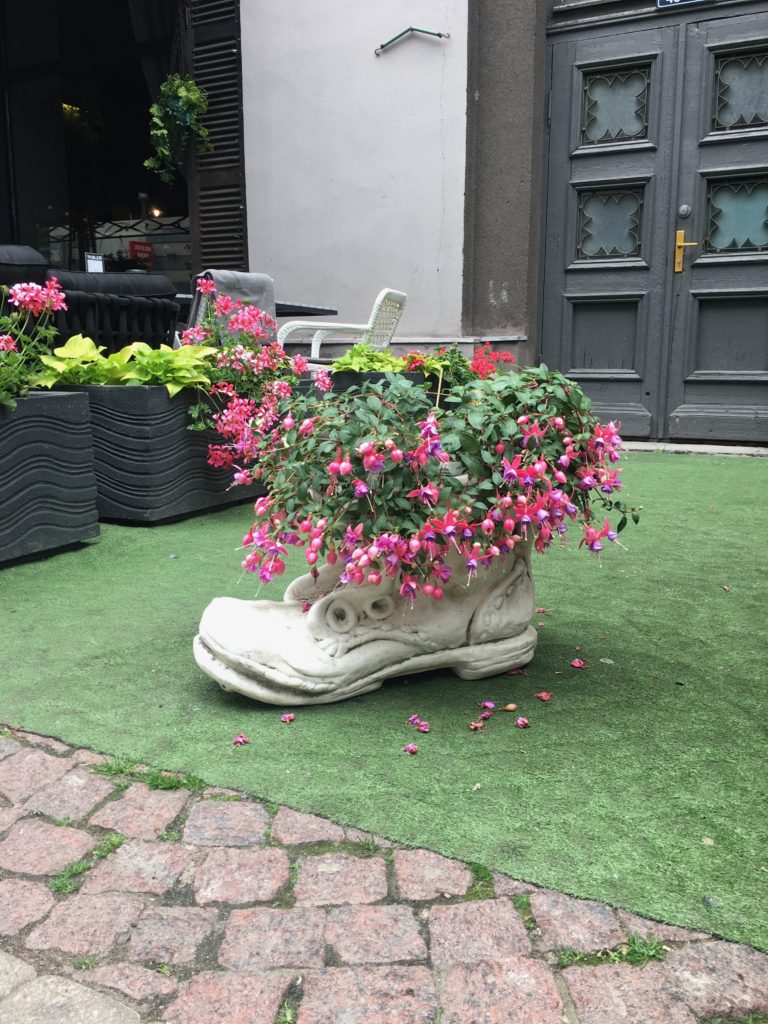
…even boots 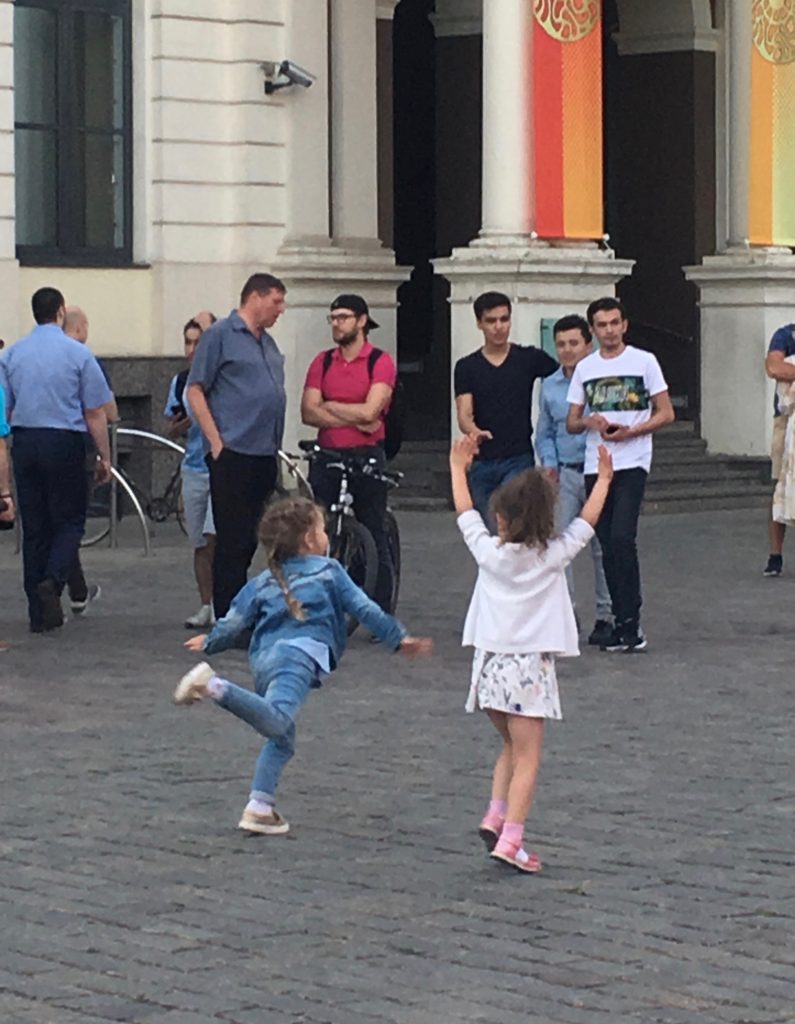
Kids dancing in Town Square 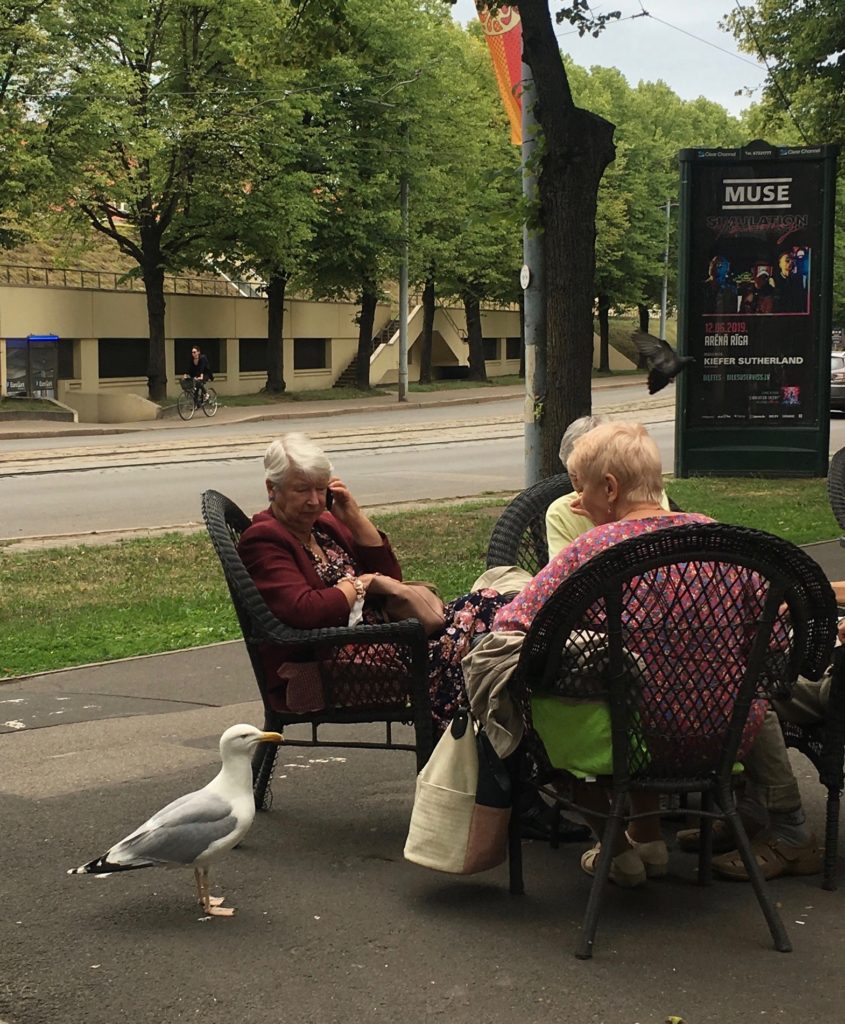
This gull thinks it’s a pigeon 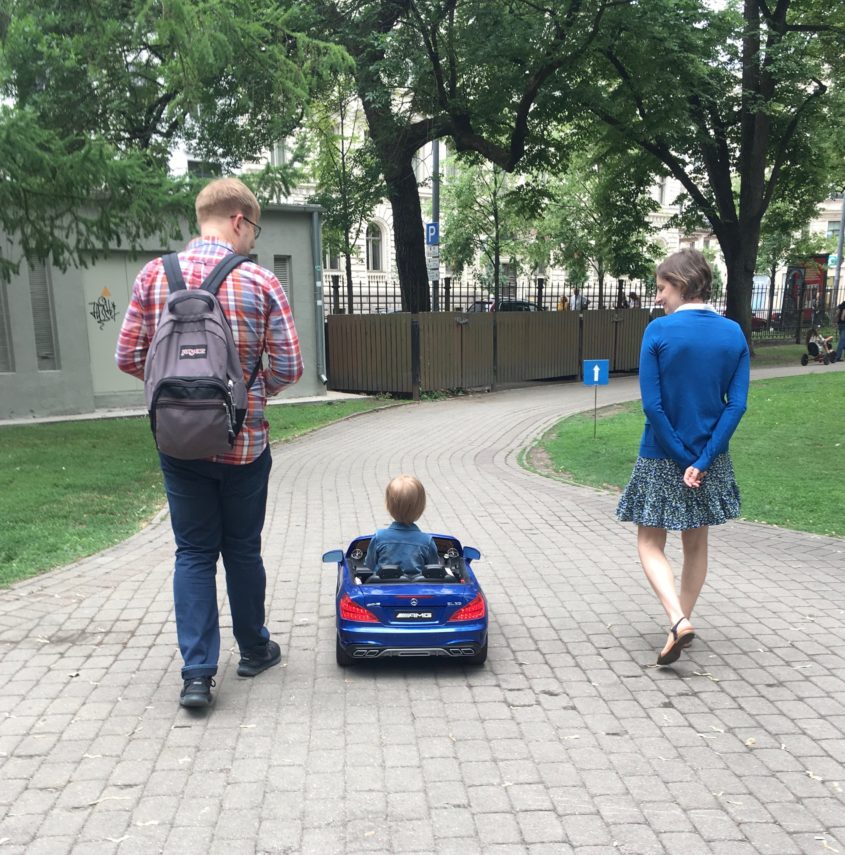
Yes, this child is driving a kiddie car with gas and brakes 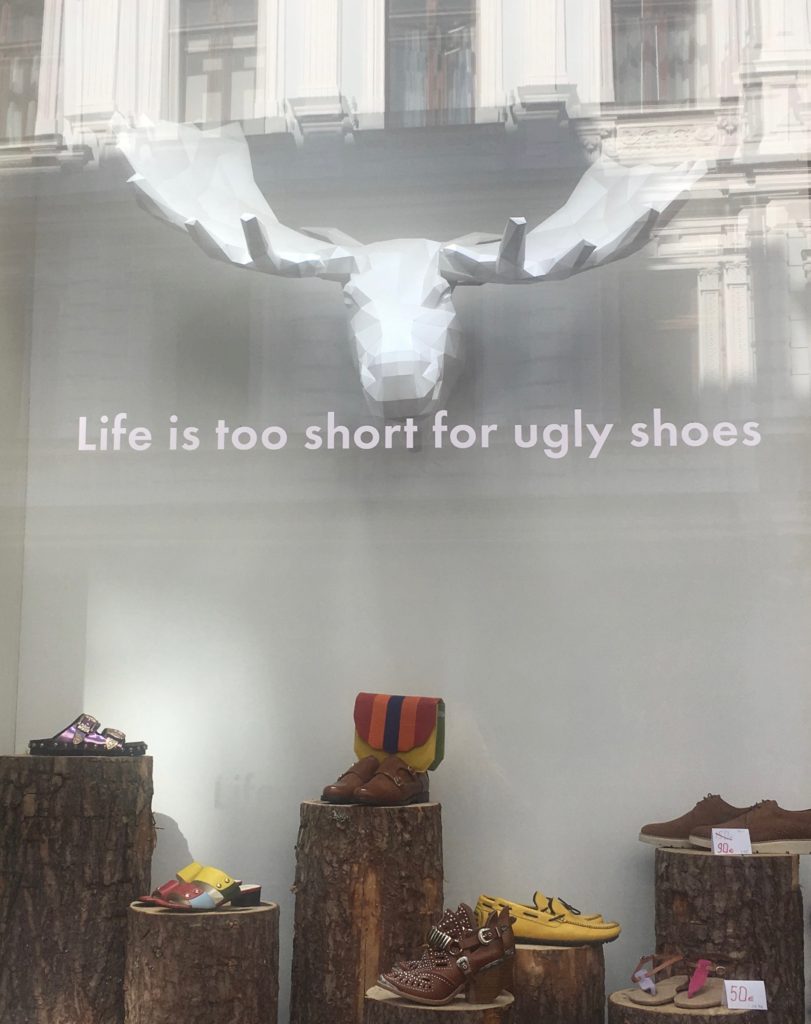
Maybe, but not on these cobblestones. 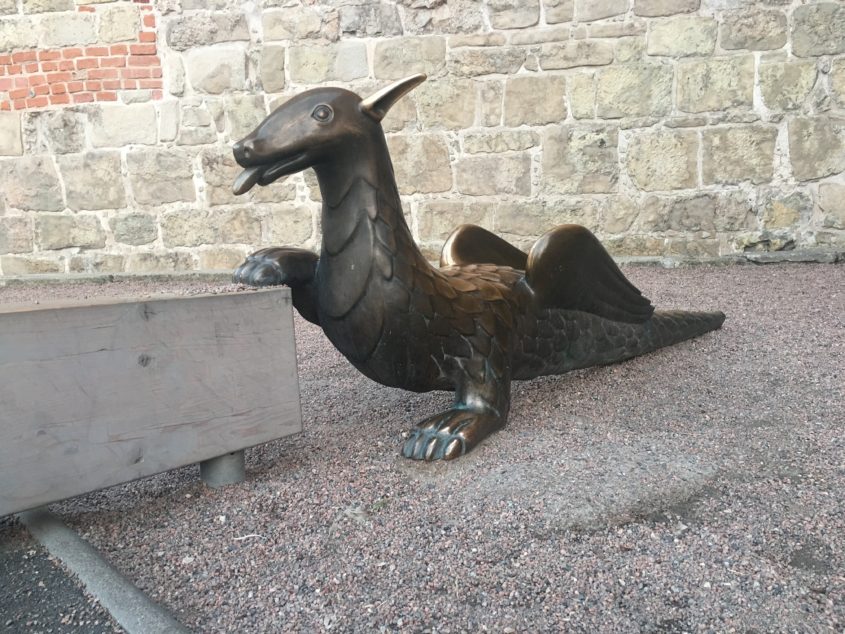
Game of Thrones for kiddies in the park
